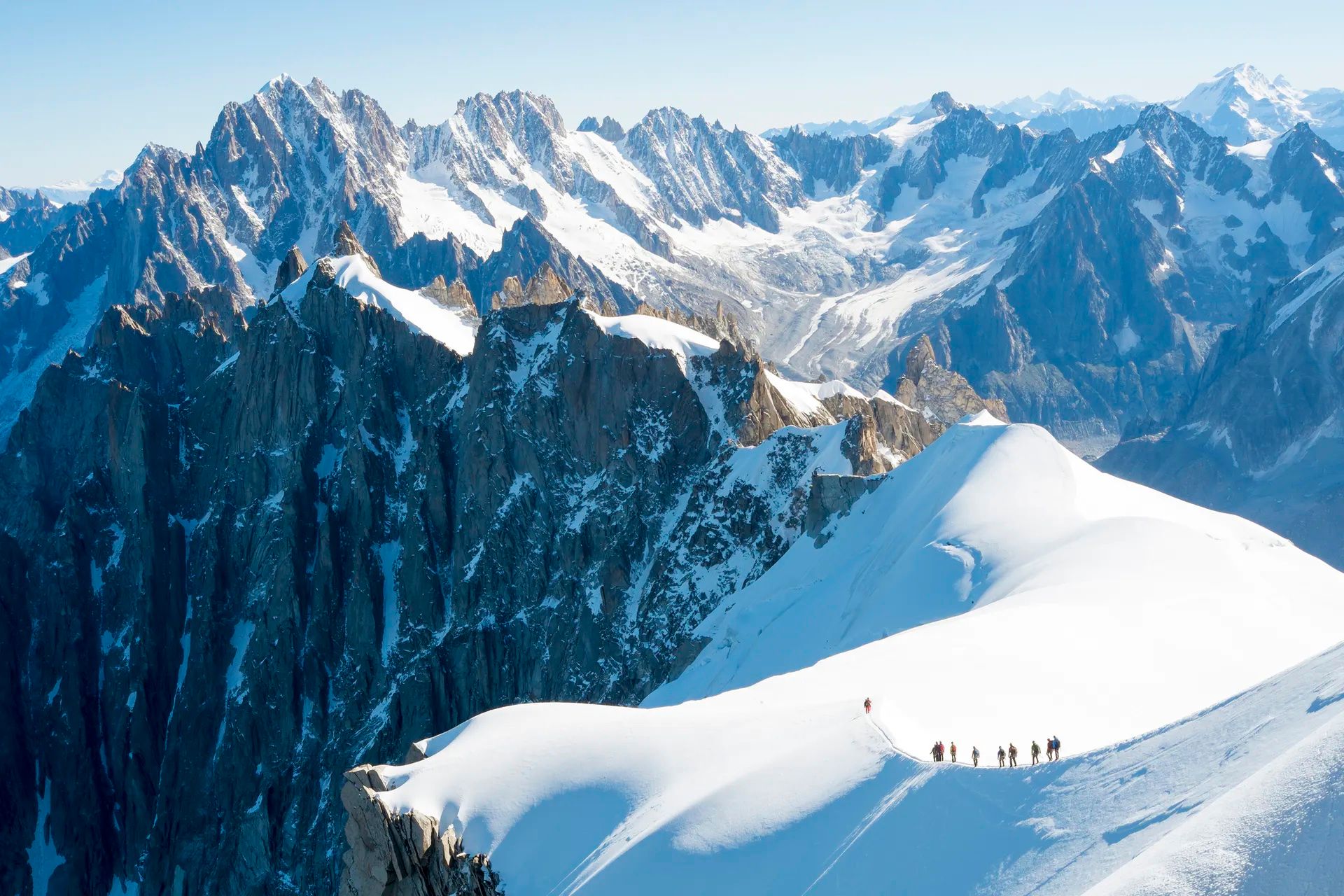Perhaps you’re reading this because you’re looking for your next mountain climbing adventure. Maybe you’re searching for an answer to a pub quiz (in which case, put your phone away, you cheater!). Either way, if you’re looking for a list of the highest mountains in Europe, you’ve come to the right place.
Depending on how much you know about Europe's mountains, you may be surprised the likes of the Matterhorn, in the Swiss Alps, haven’t made it onto the list. In fact, most entries can be found in the Caucasus Mountains, a vast system of mountain ranges spanning Russia, Georgia, Azerbaijan and Armenia. The mountains are viewed as the geographical dividing line between Europe and Asia - so can be considered part of either continent. Mount Elbrus, in the Russian Caucasus, is commonly agreed to be the highest mountain on the European continent.
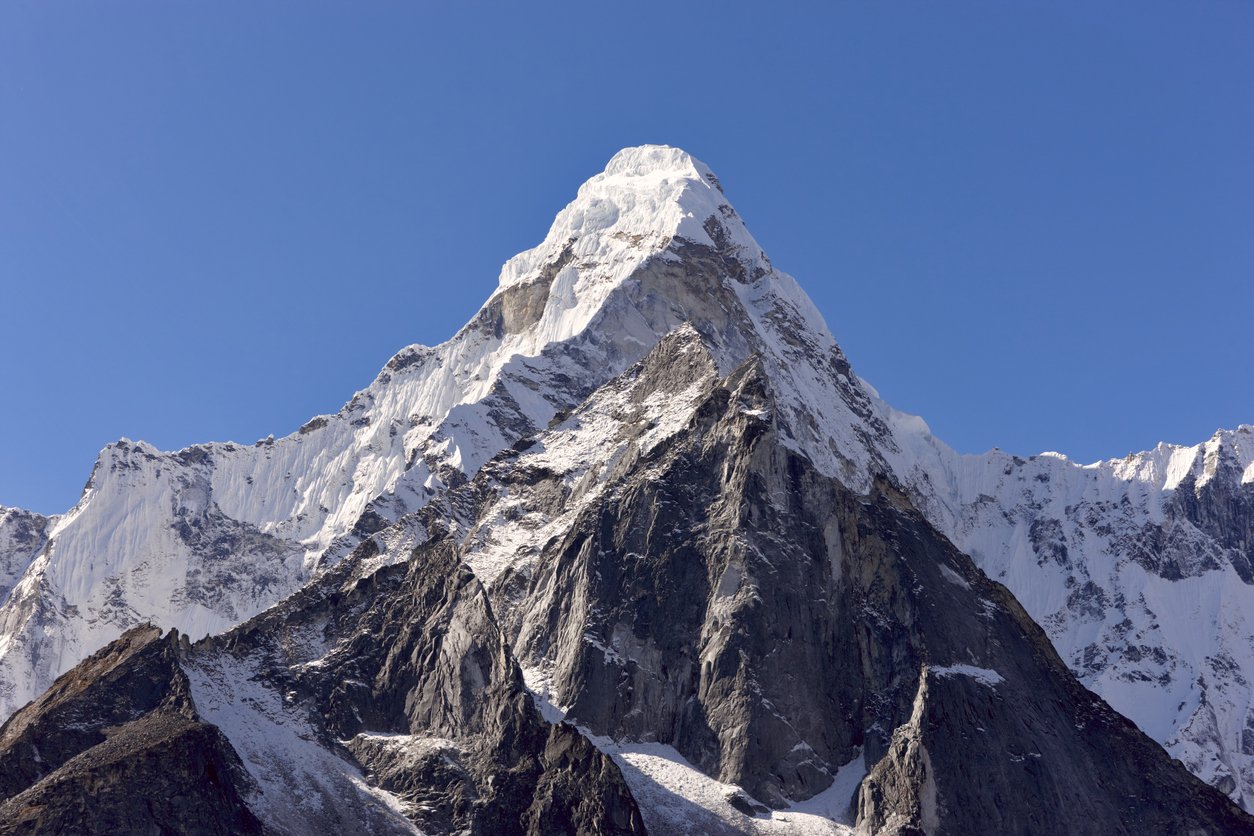
To continue the confusion, Russia is considered to be Eurasian, or trans-continental. While most of its landmass is located in Asia, around 23% of it lies within Europe. Georgia is also a borderland country - while some geographers consider it to be part of Asia, others (including many Georgians) identify it as a European country. In fact, Georgia has recently applied to become part of the EU. For the purposes of this article, we’re designating the Caucasus Mountains in both Georgia and Russia as part of Europe - in line with the majority of ‘highest mountains in Europe’ lists.
So, now that’s cleared up - let’s crack on.
The 10 Highest Mountains in Europe
1. Mount Elbrus, Caucasus Mountains, Russia - 5642m
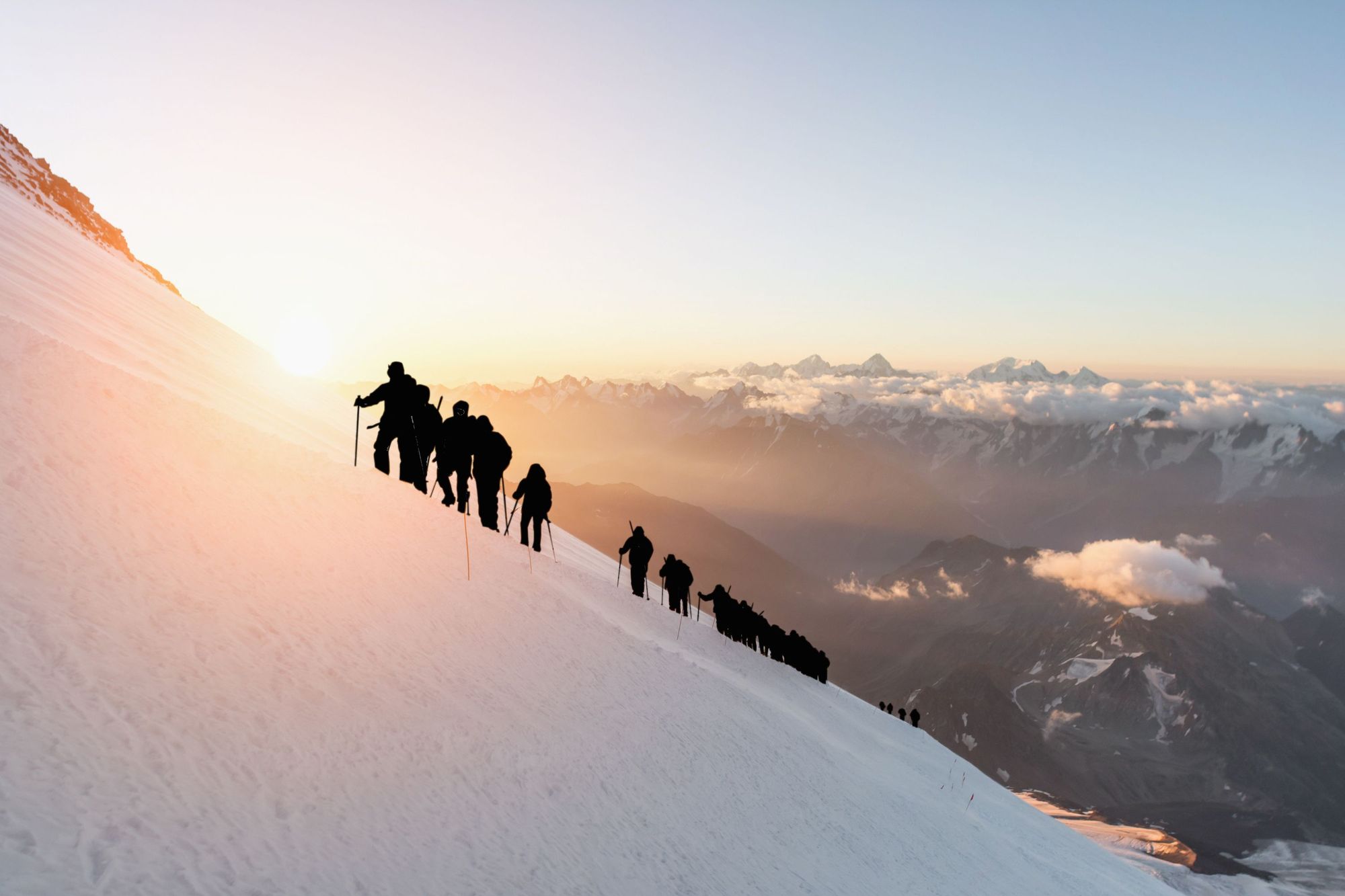
Mount Elbrus is the highest peak in the Caucasus Mountains. It’s a dormant stratovolcano with two summits - the western one towers a lofty 5,642m, while the eastern summit is a metre shorter. It’s one of the Seven Summits, which consists of the highest mountain on each continent - a legendary challenge for the truly intrepid.
The higher summit was first ascended in 1874 by an English expedition party led by F. Crauford Grove. Thousands of people attempt the climb each year; the most popular route is from the south. It’s suitable only for experienced climbers.
Fancy learning more? Read Together on Top of the World: The Remarkable Story of the First Couple to Climb the Fabled Seven Summits
2. Dykh-Tau, Caucasus Mountains, Russia - 5250m
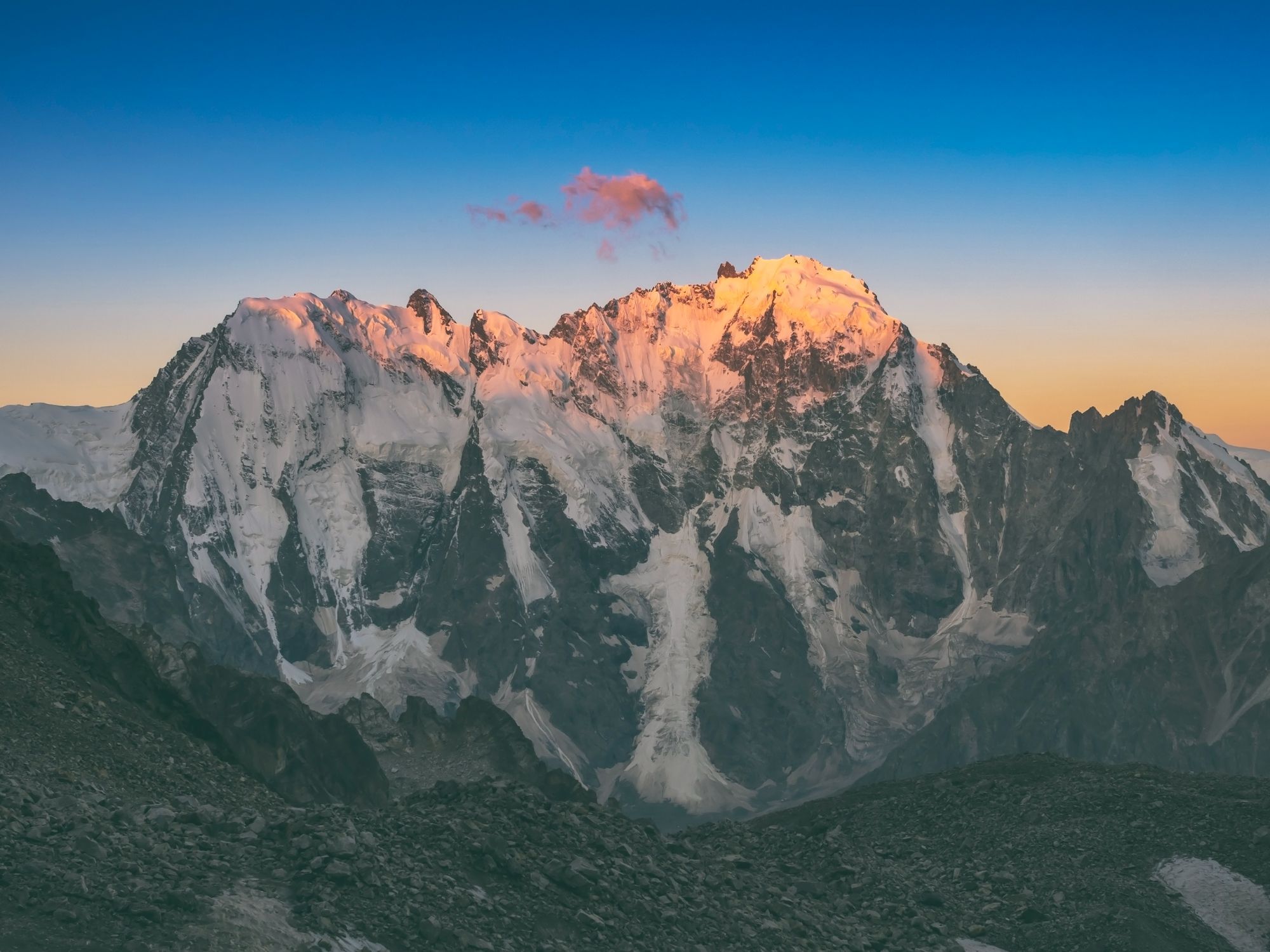
Dykh-Tau is the second highest peak in the Caucasus Mountains, around three miles north of the Georgian border. It’s also known as one of the 'Brothers of Bezengi' (the other is Koshtan-Tau) - part of the huge wall of mountains constituting the Northern Massif, in the Bezengi National Park.
Despite being a little shorter than Mount Elbrus, Dykh-Tau is a much more technical climb. There’s no easy route to the summit - it’s renowned for its technical difficulty, and avalanches are common. A great deal of advanced planning is required to get a permit for the Bezengi area.
Fancy learning more? Watch this vlog on climbing Dykh-Tau
3. Shkhara, Caucasus Mountain Range, Georgia - 5193m
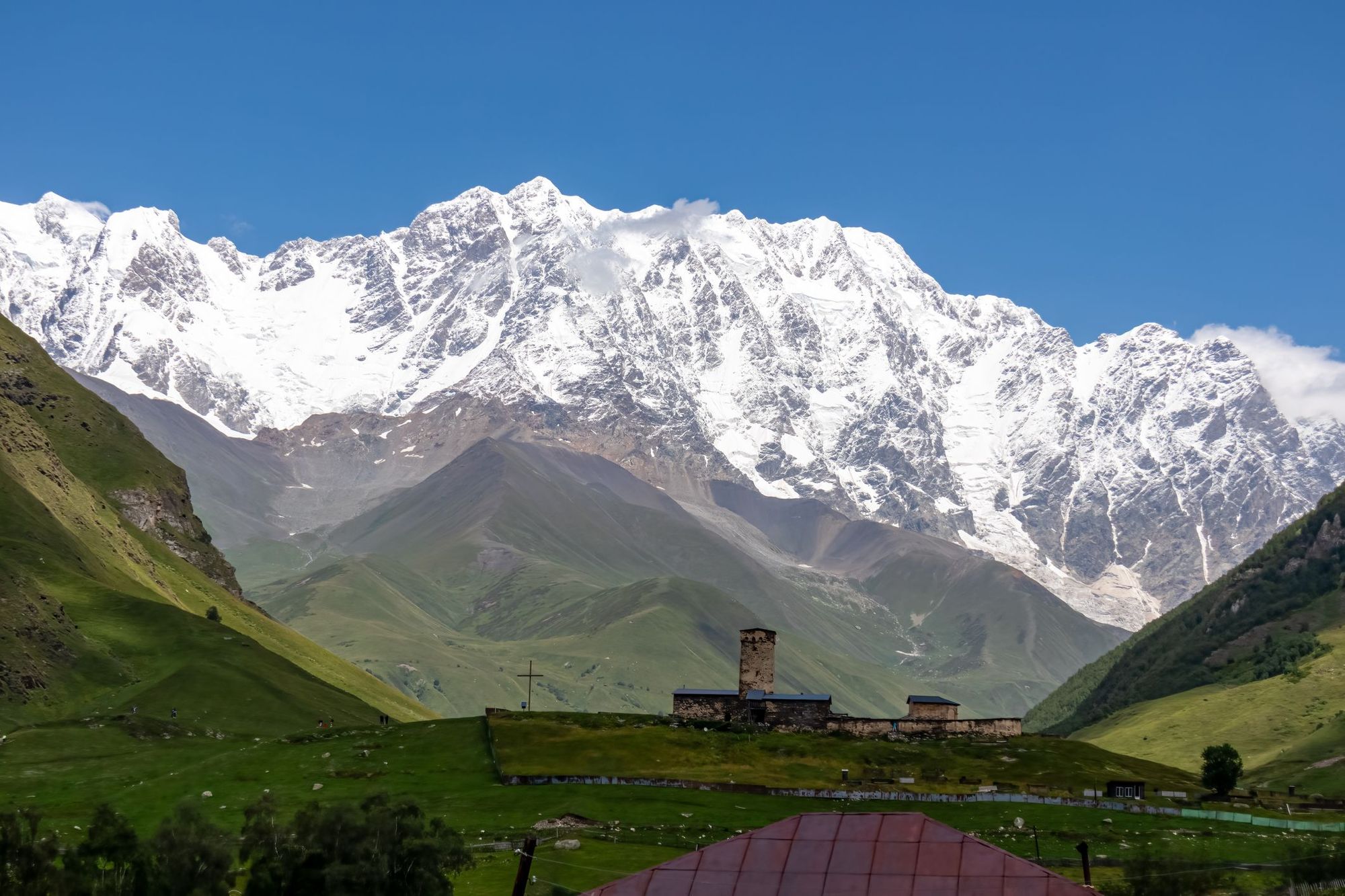
Shkhara is the highest point in Georgia, just across from the border from Russia. It’s part of the majestic Bezengi Wall, a 7.5 mile long mountain range. According to historian and mountaineer Audrey Salkeld, traversing the entire Bezengi Wall is "Europe's longest, most arduous, and most committing expedition." So guess what? Climbing Shkhara is going to be a tricky one.
The easiest route to the summit is the Cockin Route, named after the first mountaineer to reach the peak, in 1888. It’s graded 4B-5A under the Russia system, and involves climbing up an ice slope and crossing the northeast ridge.
Fancy learning more? Read this account of Thirteen Days on Shkhara.
4. Koshtan-Tau, Caucasus Mountain Range, Russia - 5151m
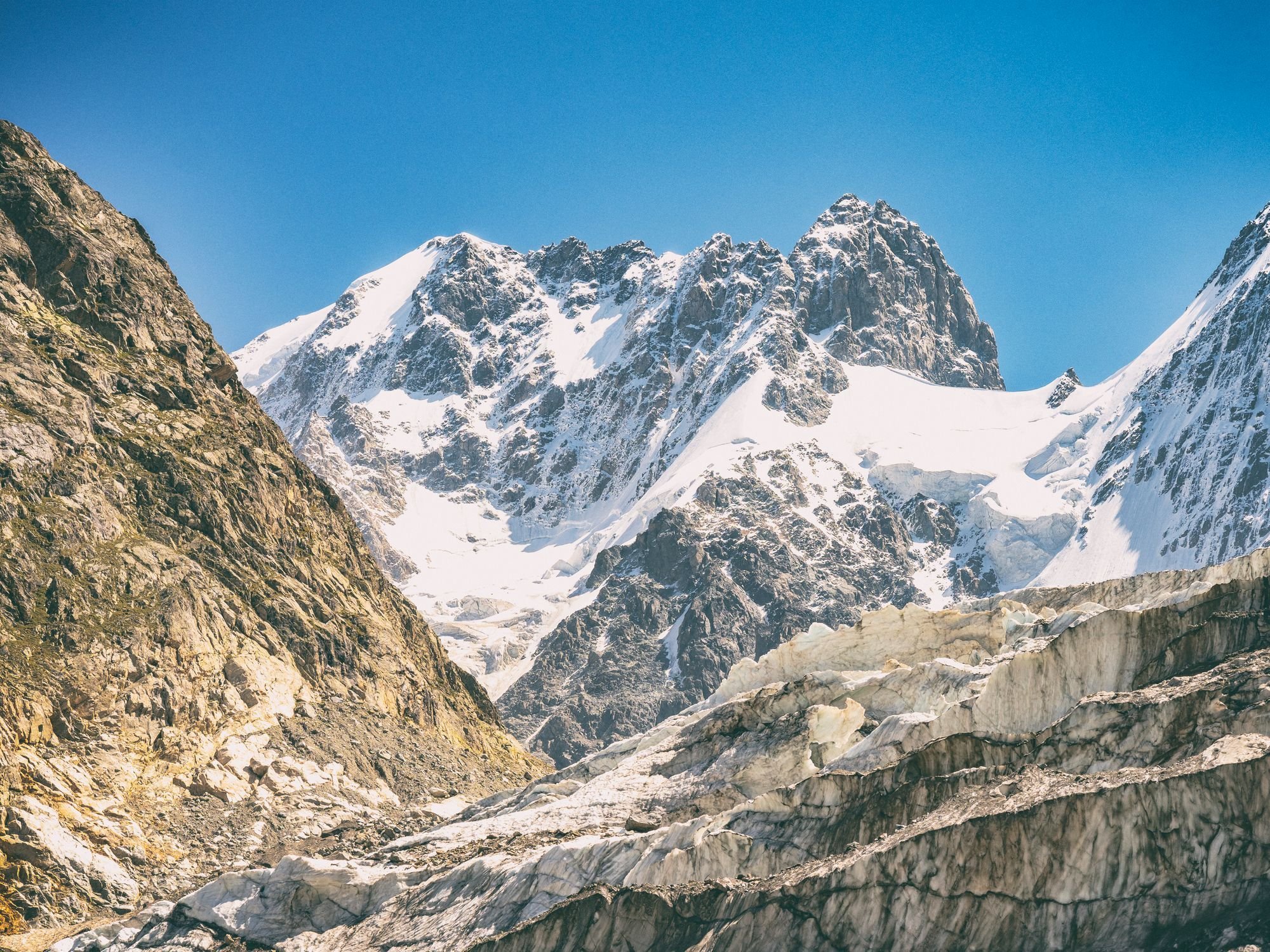
Koshtan-Tau is the second of the Brothers of Bezengi, and although slightly shorter, has an impressive pyramid shape that attracts mountain lovers. It was first climbed during the golden age of mountaineering at the end of the 19th century - the Austrian Alpine Club reached the summit in 1888.
Like all the mountains on this list, climbing Koshtan-Tau requires skill and dedication; experienced Alpinists can take the 4A route along the northern side of the mountain.
Fancy learning more? Read this guidebook, Classic Climbs in the Caucasus.
5. Mount Kazbek, Caucasus Mountain Range, Georgia - 5054m
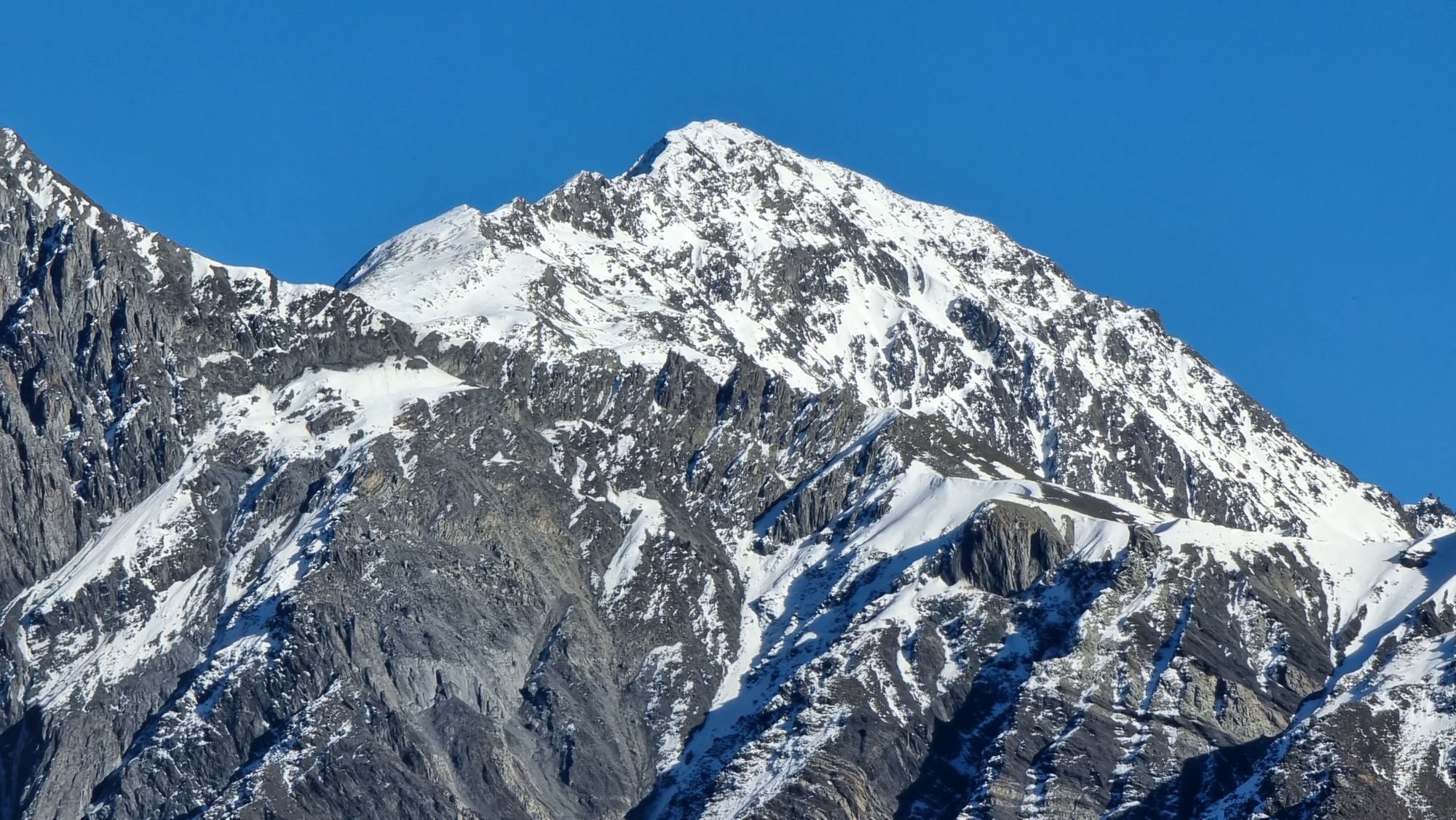
The tallest mountain in Eastern Georgia is Mount Kazbek, a dormant stratovolcano with a spectacular pyramid-shaped peak. It's also one of the best hikes in Georgia. It’s a much more accessible peak to climb than the others already mentioned on the list, although still an exciting challenge. We’d recommend acclimatising and getting accustomed to the environment with a couple of day hikes in the area. Base yourself at the Altihut mountain refuge and try hiking the Arsha Pass (highest point 3,880m).
Hiking Mount Kazbek is a two-day affair. On the first day, head from Altihut up to Meteo Station, a former meteorological station which is now a refuge and campsite. Look out for the high-altitude Betlemi Church, which is located 3,930m above sea level. From Altihut it’s an 11-hour trek to the summit and back. It’s a tough route up narrow paths, across a glacier, and a final 100m climb to the top. But the views are incredible!
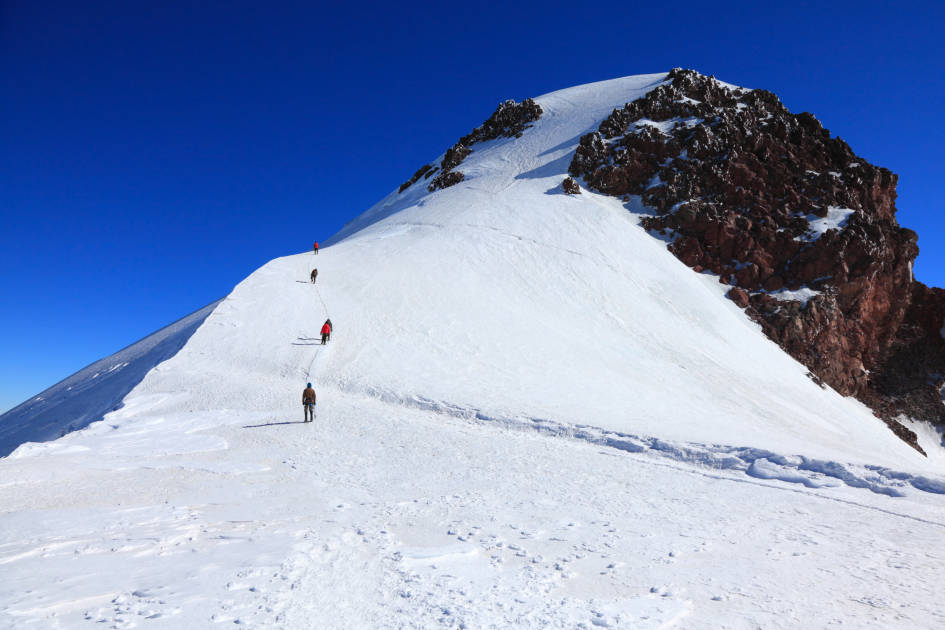
Fancy learning more? Read The Caucasus: An Introduction
6. Tetnuldi, Caucasus Mountain Range, Georgia - 4858m
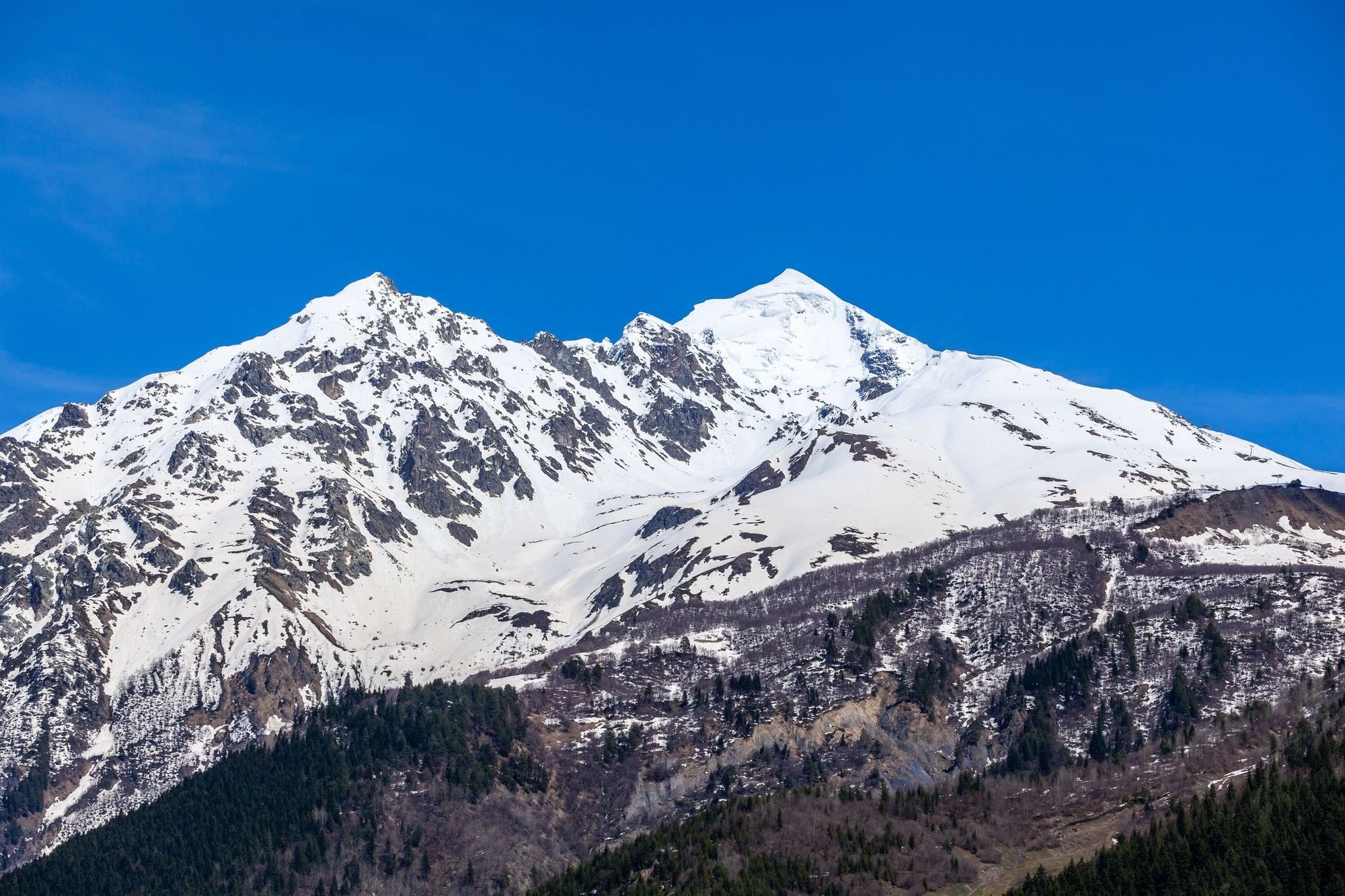
This Georgian mountain might not be as high as Mount Kazbek, but it’s located in the wild, remote Svaneti region that’s fantastic for hiking. It makes for a spectacular, challenging climb - as with Tetnuldi, a couple of lower-altitude hikes to acclimatise come highly recommended.
Most climbers head up Tetnuldi via the Southwest Ridge. It’s most common for groups to pitch a tent at Camp 2 (3,700m) on the first day, and spend a day acclimatising and hiking around the area. It’s a steady climb up until the 4,300m mark - after that you’ll be scrambling along an exposed ridge. You might need to use a top rope to reach the summit, so make sure you travel with an experienced guide.
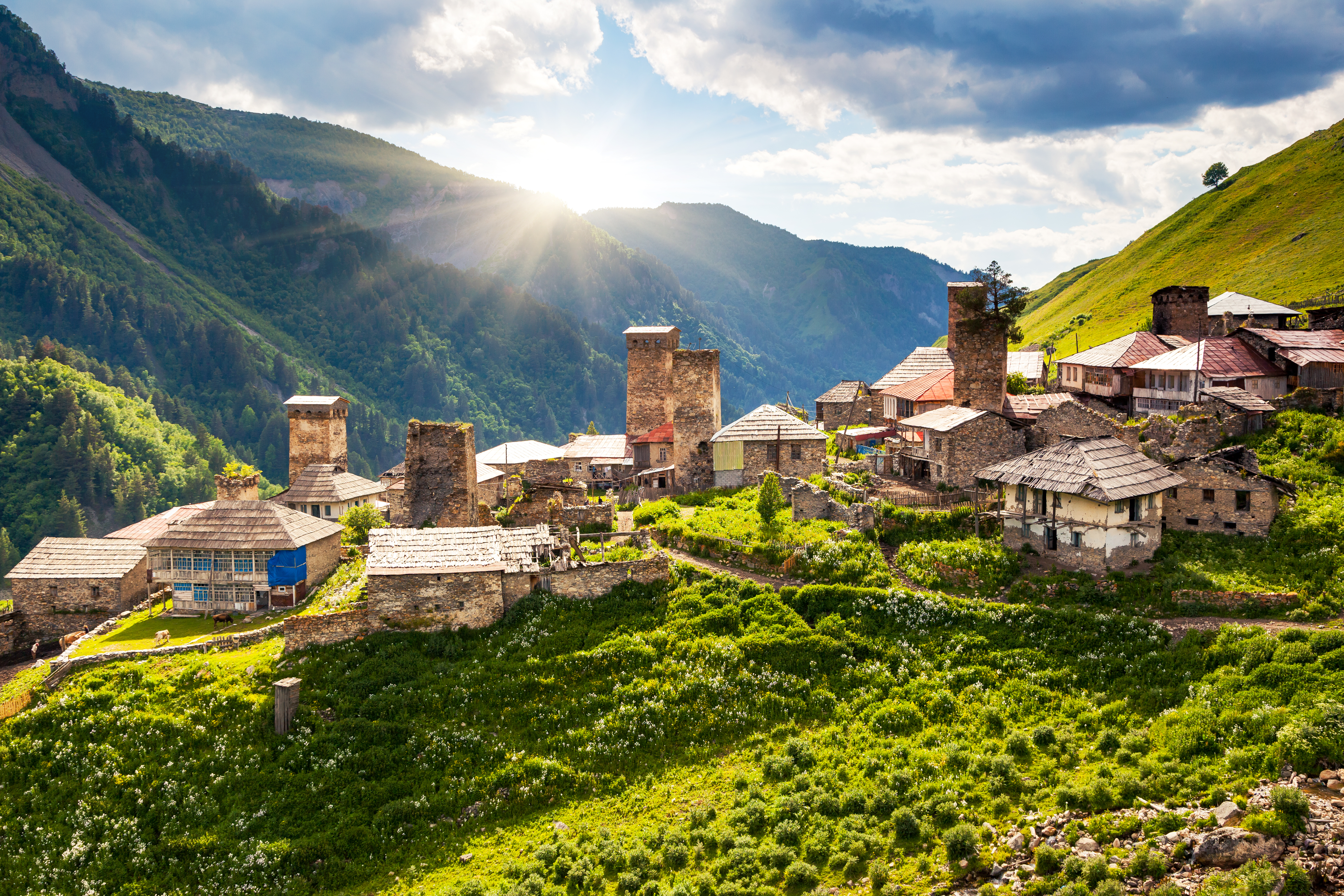
Fancy learning more? Read Svaneti, the Essence of the Caucasusi
7. Mont Blanc, European Alps, France - 4805m
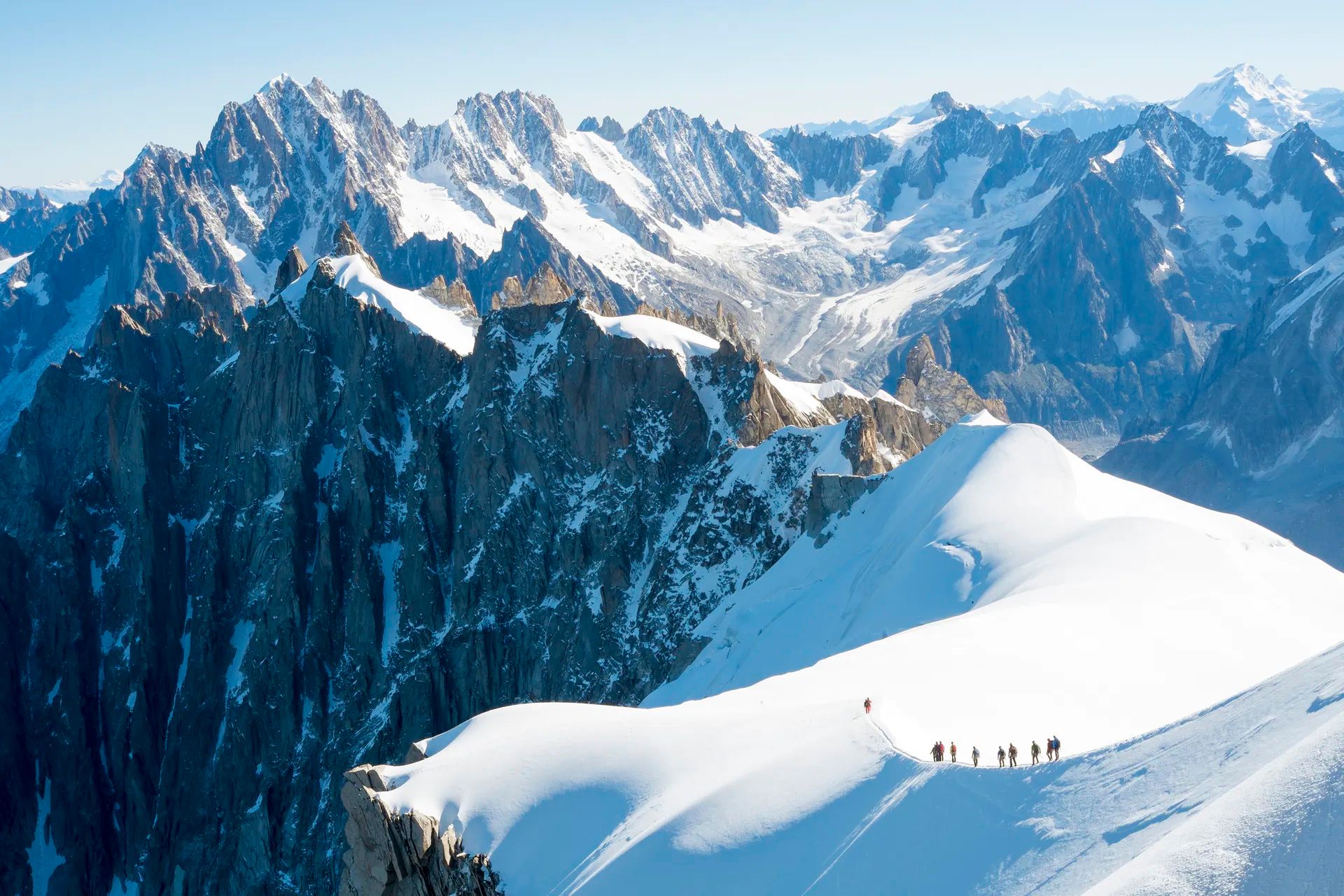
The legendary Mont Blanc is the highest mountain in the Alps and Western Europe - it’s also the 11th most prominent mountain in the world, attracting climbers from all over the world. The first ascent was completed in 1786 by Jacque Balmat and Michel Paccard. The fastest ascent and descent was by speed climber and runner Kilian Jornet in 2013 - in 4hr 57mins! That feels to us like an unbeatable speed (but by all means, prove us wrong) - however, with 20,000 people reaching the summit every year, the climb itself is an achievable challenge.
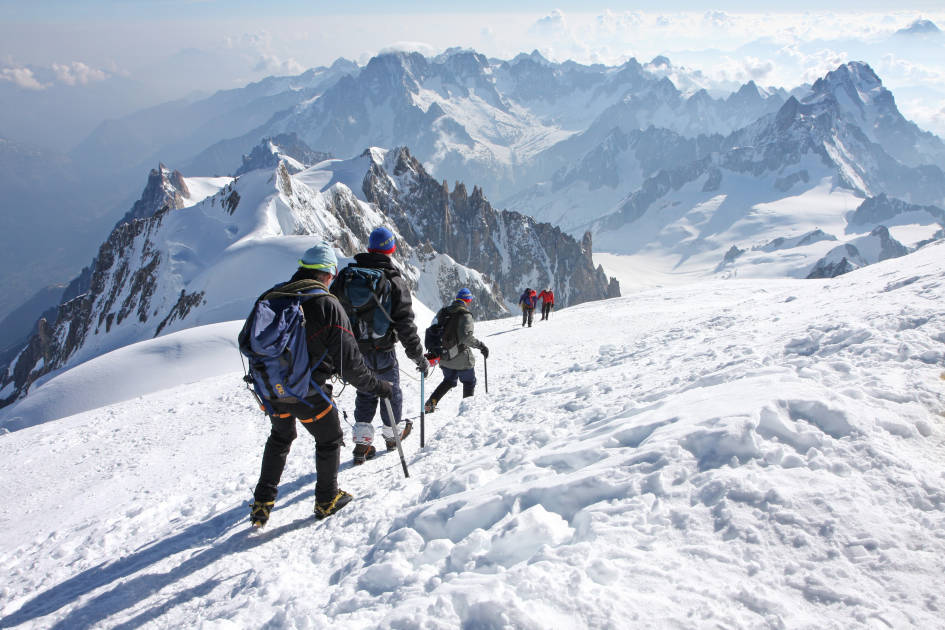
We’d recommend tackling the peak in a small group with an experienced guide - head up to the top on a Monday, the quietest day of the week. As always, some day hikes in the area will help improve your head for heights. Get Tramway du Mont Blanc to the Refuge du Nid d’Aigle. It takes between 11-14 hours to ascend and descend the summit via the most popular route via Dome de Goûte and the Bosses Ridge - sleep the night in the futuristic Goûter Refuge.
Fancy learning more? Watch Summits of my Life, a documentary about Kilian Jornet’s climbing adventure.
8. Mount Dzhimara, Caucasus Mountain Range, Russia - 4780m
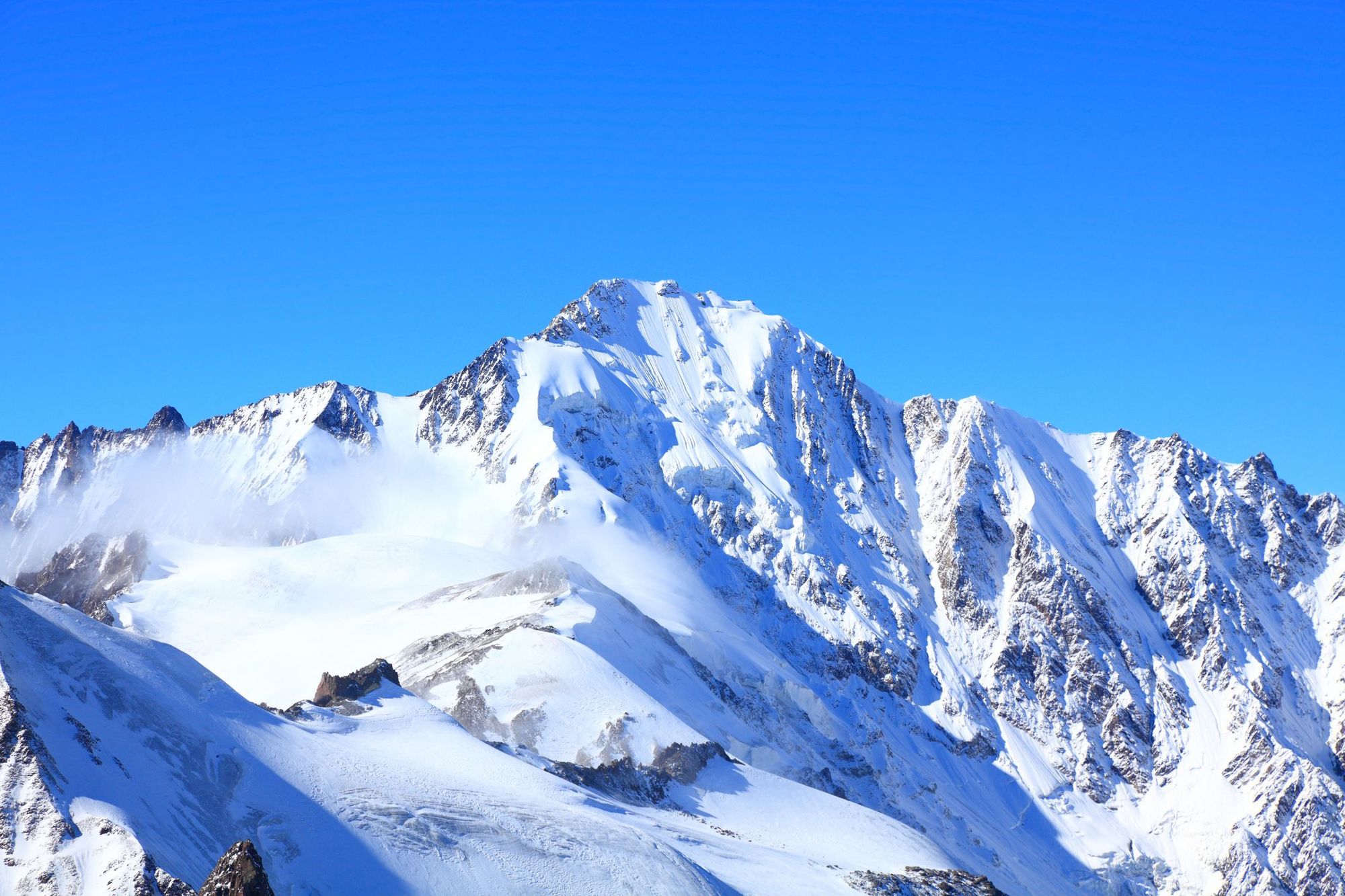
Mount Dzhimara is located just 5.5 miles to the west of Mount Kazbek, in North Ossetia-Alania, a Russian republic. It’s the second highest peak in the Khokh range - Mount Kazbek is the highest.
Unlike its neighbour, you won’t find guided expeditions to the summit - in fact, we weren’t able to find much information out about Dzhimara (also known as Jimara) at all. There were no blogs or recorded climbs in the usual places (although we did see some videos about trekking its foothills). Feeling intrigued about this mysterious mountain? Yes - we are too!
Fancy learning more? Read about North Ossetia-Alania
9. Ushba, Caucasus Mountain Range, Georgia - 4710m
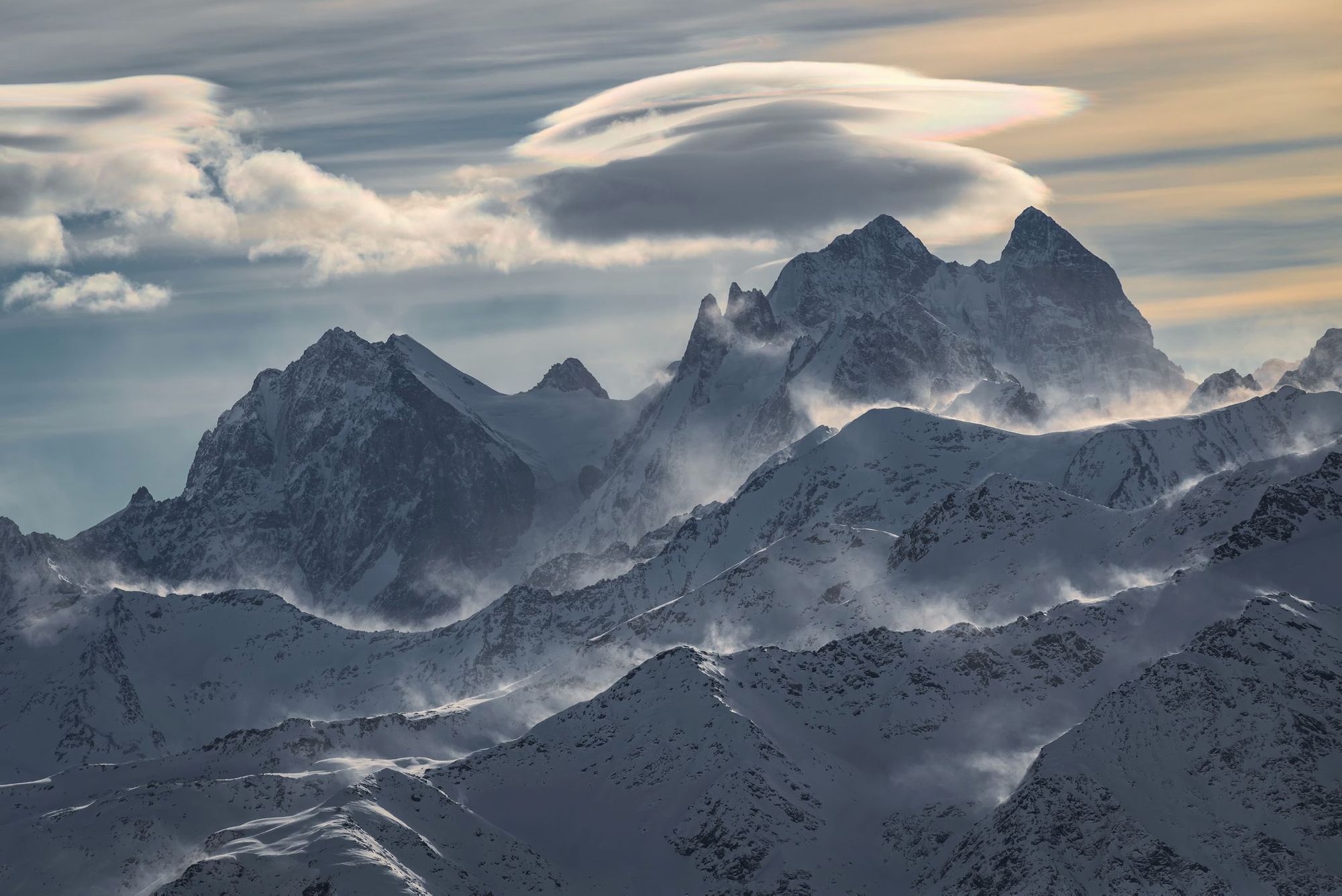
Ushba is a prominent peak with two summits in the Western Caucasus - the south summit is slightly higher than the north (which has an elevation of 4,690m). The mountain’s steep slopes and towering double peaks have been enticing climbers for years. Reaching the top is a considerable achievement as the mountain claims the lives of around half a dozen climbers a year; their vertical walls and ice-filled crevices are not easy to navigate. The area is also renowned for its awful weather; think gale-force winds and icy blizzards.
There are around 50 routes up the mountain known as “the Matterhorn of the Caucasus” - most of them are grade 5 and 6 classifications. The Northern Ushba classic route is considered the easiest (it’s 4B) - it will take you across the Ushba Plateau and up to the summit. Should you wish to reach the higher southern summit, the Gabrieli Route is considered the least demanding.
Fancy learning more? Read this article, Mount Ushba: the Irresistible Climb
10. Monte Rosa, Swiss Alps, Switzerland - 4634m
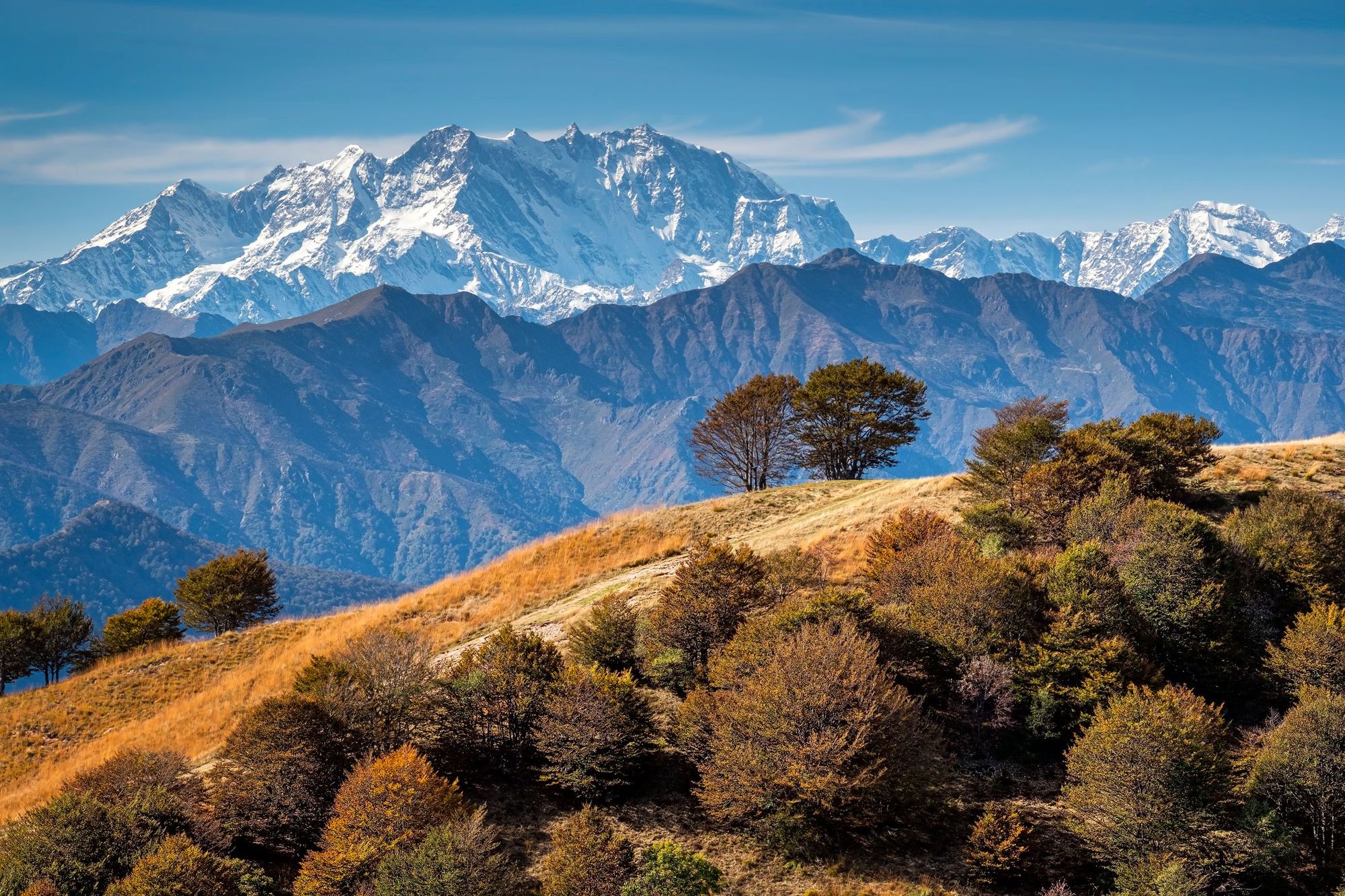
Monte Rosa is the highest mountain in Switzerland, and is surrounded by alpine scenery so glorious we’ve named it one of our favourite hikes in Europe. This craggy, snowcapped mountain massif has four summit peaks - the highest one is Dufourspitze, named after surveyor Guillaume-Henri Dufour. It’s inspired artists (including Leonardo da Vinci, who ventured onto its slopes) and has a rich climbing tradition - the first recorded ascent was in 1778.
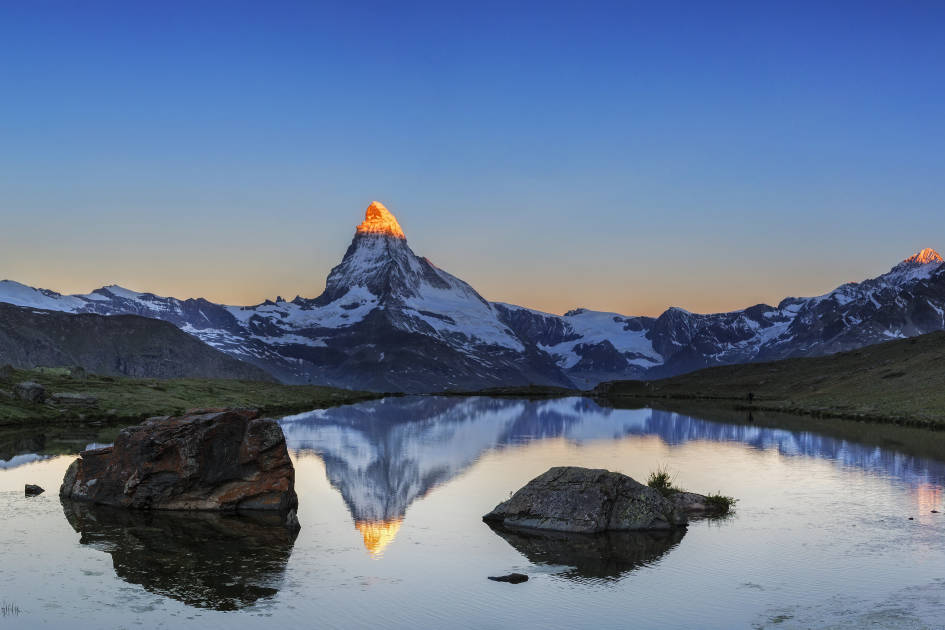
There are plenty of routes up Monte Rosa - you can choose any of its four peaks to summit. There’s also the popular ‘Spaghetti Route’, so named because it zigzags up a number of peaks on the massif. Talking of spaghetti, many of the mountain refuges on Monte Rosa offer hot dinners such as pizza, pasta, and alpine platters - Refugio Gnifetti in particular is renowned for its food!
Fancy learning more? Read The Tour of Monte Rosa: A Trekker’s Guide
Feeling inspired? Then check out our mountain climbing holidays adventure collection.


